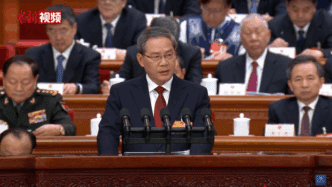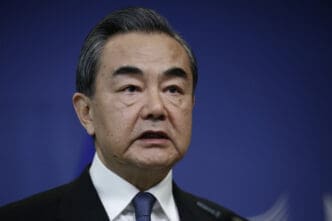The United States has launched a more intense and extensive airstrike campaign against Yemen’s Houthi rebels, marking a strategic shift under President Donald Trump. Unlike the previous Biden administration, which limited its strikes while Arab allies sought peace talks with the group, the current administration’s approach includes targeting ranking personnel and urban areas. This escalation follows threats by the Iranian-backed Houthis to resume attacks on Israeli vessels due to Israel’s blockade of aid to the Gaza Strip.
The U.S. response has been closely scrutinized in Washington, especially after Trump’s security officials shared plans for the initial strikes in a group chat that included a journalist. Despite the heightened military efforts, experts caution that bombing alone may not suffice to deter the Houthis, who have demonstrated resilience in the past. “They are resilient,” stated retired U.S. Navy Vice Adm. Kevin Donegan. “This isn’t something that is a one-and-done.”
While the U.S. military has not confirmed any civilian casualties since the operation began, there is growing concern about civilians being caught in the crossfire. Activists worry that strikes may have already resulted in noncombatant deaths in Houthi-controlled areas. “Just because you can’t see civilian harm doesn’t mean it’s not happening,” warned Emily Tripp, director of Airwars, a U.K.-based organization that monitors airstrike campaigns.
A New Intense U.S. Airstrike Campaign Shakes Yemen
Initiated on March 15, the campaign features American warships launching cruise missiles and fighter jets from the USS Harry S. Truman targeting Houthi areas in Yemen, the Arab world’s poorest nation. President Trump reiterated the U.S. commitment to ensuring safe passage for American and allied vessels, following his administration’s reclassification of the Houthis as a “foreign terrorist organization.”
The Houthis report that the airstrikes have resulted in 57 deaths, although figures from different sources vary. Abdul Malik al-Houthi, the group’s leader, claims that over 930 strikes were conducted last year by the U.S. and U.K., compared to the 305 recorded by the Armed Conflict Location & Event Data Project (ACLED). Variations in reported numbers may stem from different counting methods, such as the Houthis potentially counting each piece of ordnance as a separate strike.
The Trump administration touts its approach as a decisive break from Biden’s tactics. National Security Adviser Mike Waltz described the strikes as a robust response targeting multiple Houthi leaders. In contrast, the previous administration focused primarily on mobile launchers and infrastructure. “This was an overwhelming response,” Waltz noted, highlighting the targeting of Houthi leadership.
Luca Nevola, a senior analyst at ACLED, noted the strategic shift toward urban areas under Trump’s presidency, suggesting a possible “decapitation strategy” aimed at dismantling the Houthi leadership. The administration has also decentralized the command structure, allowing Central Command in the Middle East to initiate strikes without direct White House approval, potentially leading to an increase in military actions.
Israel, a frequent target of Houthi missile and drone attacks, has also conducted several airstrikes, further complicating the regional dynamics.
Living with the News
- Increased Tensions: Residents in Houthi-controlled areas face heightened risks of airstrikes, affecting daily life and safety.
- Humanitarian Concerns: The intensified military operations may exacerbate existing humanitarian crises, hindering aid delivery and worsening living conditions.
- Regional Security: The U.S. campaign adds another layer of complexity to Middle Eastern geopolitics, impacting neighboring countries’ security and diplomatic relations.
- Civilian Casualties: Potential civilian casualties raise ethical concerns and may lead to international scrutiny and calls for accountability.
- Diplomatic Implications: The shift in U.S. policy signals changing priorities, possibly affecting future peace negotiations and alliances in the region.
Source: AP News








